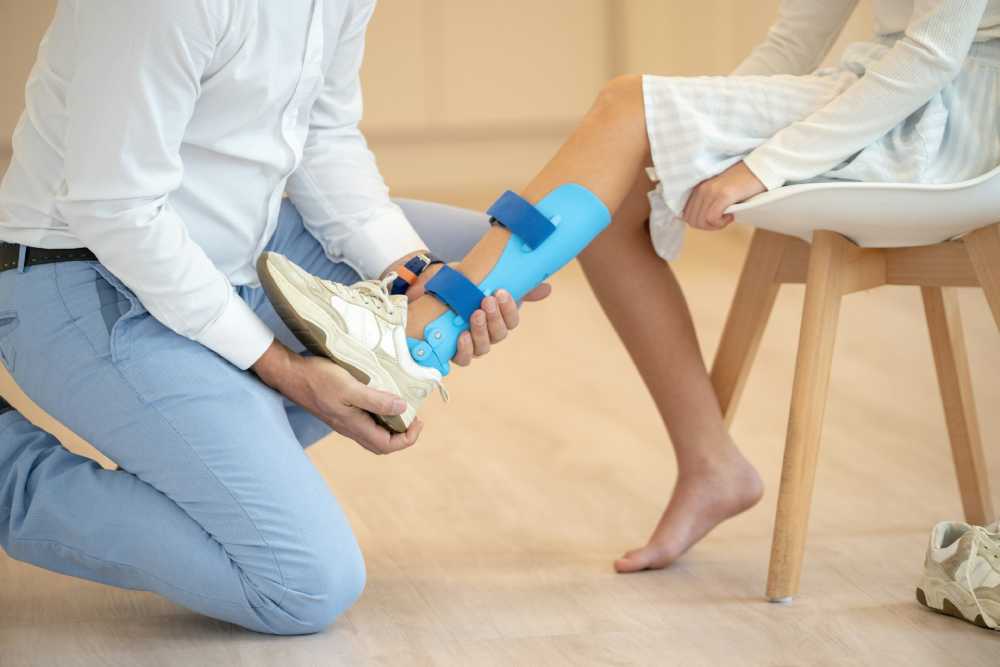Holistic Approaches to Orthopedic Health: Combining Traditional and Modern Techniques for Optimal Wellness
Orthopedic health is crucial to overall well-being, as it involves maintaining bones, joints, and muscles. These elements are essential for everyday activities, from walking and running to carrying groceries and playing sports. Proper orthopedic care aims to maintain mobility, reduce pain, and improve quality of life.
A growing body of research suggests that a holistic approach(combining traditional treatments like surgery and medications with alternative therapies)can significantly enhance patient outcomes. This integrated care model, advocated by experts in San Diego orthopedics, empowers individuals to take control of their long-term health, emphasizing its benefits for long-term health.
Contents
Benefits of Combining Treatments
Combining traditional and modern treatments offers a multitude of benefits. For severe problems, traditional therapies like medicine and surgery are frequently required for both immediate comfort and repair.
However, incorporating modern methods like physical therapy, acupuncture, and mindfulness can provide sustained improvement and holistic wellness. For example, a National Institutes of Health research indicated that patients who combined physical therapy with acupuncture recovered faster and with less pain than those who only received one type of treatment.
This comprehensive approach addresses the symptoms and underlying causes, promoting long-term health and preventing future issues, offering an optimistic outlook for patients.
Physical Therapy: The Foundation
Physical therapy is often considered the cornerstone of orthopedic treatment. It involves various exercises and modalities to improve strength, flexibility, and overall mobility. Physical therapists collaborate closely with patients to create individualized rehabilitation programs that target specific requirements and objectives.
These plans may include exercises, manual therapy, and ultrasound or electrical stimulation modalities. By tailoring the treatment to the individual, physical therapy can significantly enhance recovery and reduce the risk of future injuries.
Acupuncture: An Ancient Technique
Due to its efficaciousness in managing pain and promoting general well-being, acupuncture, an age-old Chinese medicinal technique, is increasingly recognized in contemporary medicine. This method stimulates the body’s natural healing mechanisms by putting tiny needles into specific spots.
Acupuncture is particularly effective in reducing inflammation and alleviating chronic pain, making it an excellent complement to physical therapy. Studies, including one published by the JAMA Network, have shown that acupuncture can significantly improve outcomes for patients with chronic pain conditions.
By integrating acupuncture into a holistic orthopedic treatment plan, patients can experience enhanced relief and improved quality of life. Those interested in exploring this approach can consider service providers like Emerald Acupuncture NYC, which can offer professional, personalized care grounded in both traditional practice and modern clinical standards.
Mindfulness and Mental Well-being
Understanding the strong connection between mental and physical health, it becomes clear that incorporating mindfulness exercises such as yoga and meditation into orthopedic care is crucial. These mindfulness practices significantly reduce stress, improve mental focus, and enhance patients’ overall quality of life.
Meditation involves focusing on a specific object, idea, or action to achieve a peaceful and transparent state of mind. On the other hand, yoga combines physical poses, breathing exercises, and relaxation or meditation to promote general health and well-being. It is important to note that stress and mental fatigue can harm physical pain and impede the healing process.
Therefore, by integrating mindfulness techniques into treatment plans, patients can achieve a balanced state of mind supporting physical recovery. Research from the National Center for Complementary and Integrative Health has also revealed that mindfulness practices effectively reduce stress and pain, emphasizing their valuable role in comprehensive orthopedic care.
Nutritional Support for Bone and Joint Health
Nutrition plays a crucial role in maintaining orthopedic health. A well-balanced diet rich in essential minerals such as calcium and vitamin D significantly influences bone strength and density.
Additionally, foods like flaxseeds and salmon, high in omega-3 fatty acids with anti-inflammatory properties, can help alleviate joint discomfort. It’s also essential to ensure adequate intake of vitamins C and K and minerals like magnesium and zinc to support healthy bones and joints.
For orthopedic patients, guidance on appropriate nutrition as part of a comprehensive care plan is essential. It empowers them to make dietary choices that support their overall health and well-being. It includes incorporating nutrient-rich foods into their diet while avoiding foods contributing to inflammation or weakening bones.
By maintaining a nutritious diet, individuals not only support the healing process but also reduce the risk of future orthopedic issues. Overall, prioritizing proper nutrition is integral to promoting long-term orthopedic health and well-being.
Practical Tips for Integrating Holistic Approaches
Incorporating holistic approaches into your daily routine can be straightforward and highly effective. Here are some practical tips:
- Create a thorough treatment plan in consultation with your healthcare professional based on your requirements.
- Include physical therapy exercises in your daily routine to improve strength and flexibility.
- Explore acupuncture as a complementary therapy for pain relief and overall wellness.
- Practice mindfulness techniques, such as yoga or meditation, to enhance focus and reduce stress.
- Maintain a healthy, well-balanced diet full of vital nutrients to maintain the health of your bones and joints.
- Stay informed about new research and advancements in orthopedic care to improve your health continually.

